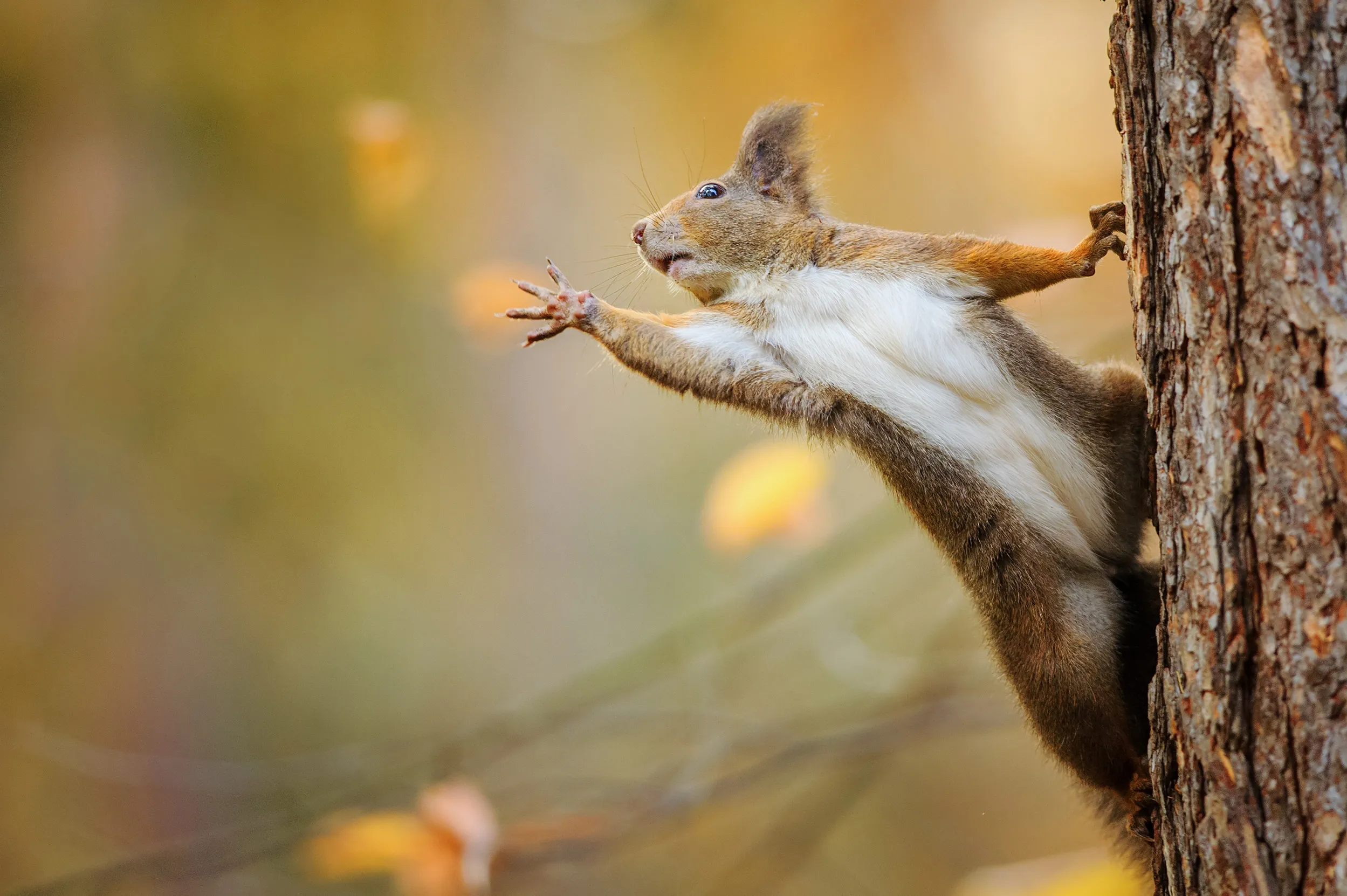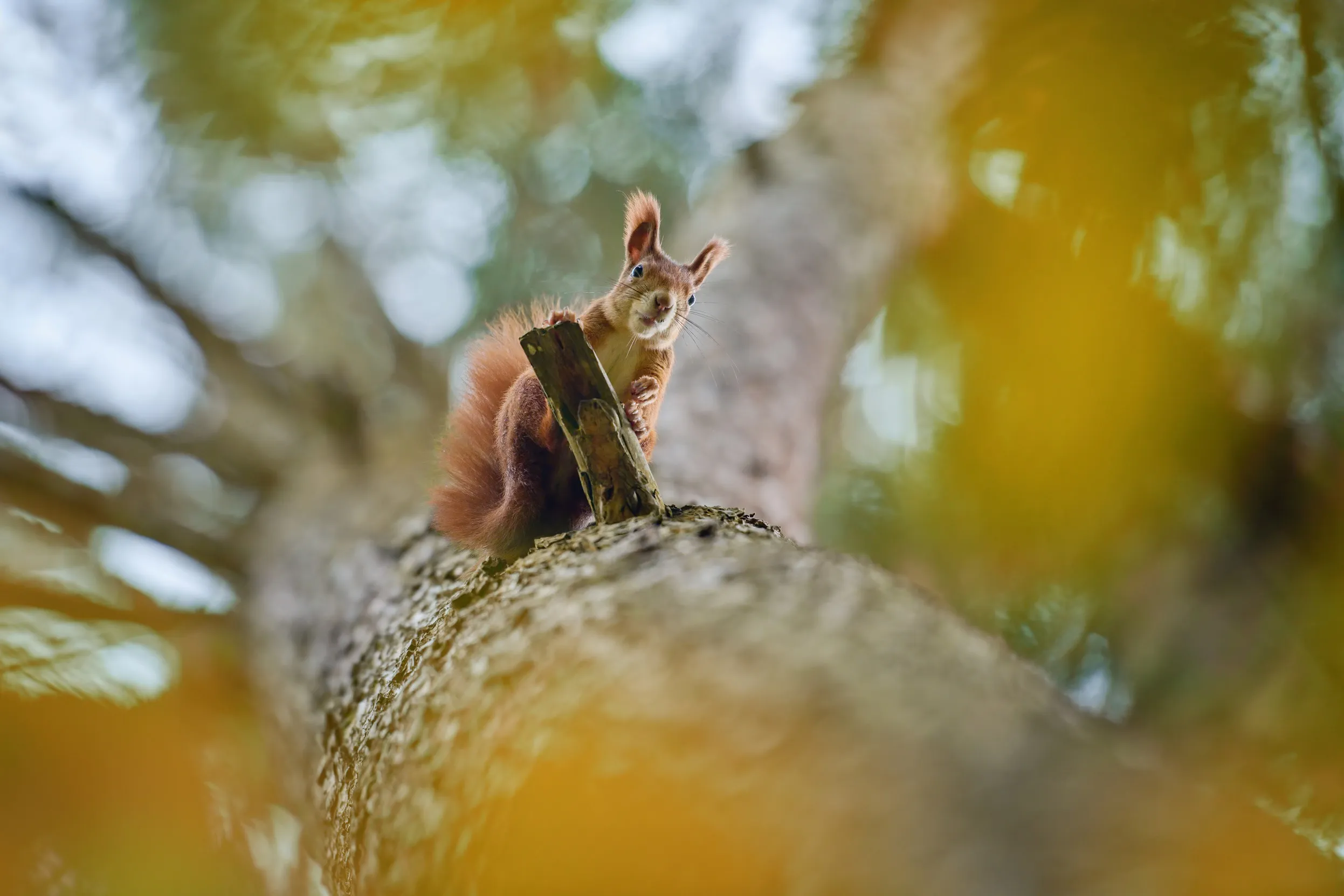News
Gamekeeper pleads guilty to killing a Buzzard
Covert RSPB filming caught the brutal killing of the bird by a gamekeeper in Yorkshire.
In ancient forests of oak, bushy tailed tree dwellers leap from branch to branch in a blaze of amber. With their tufty ears and orange coats, red squirrels were once the only squirrel in the UK and could be seen almost anywhere. But the introduction of grey squirrels and a loss of suitable forests has dramatically reduced the red’s numbers and forced those that remain to retreat into remote wild landscapes.

Where Red Squirrels remain, they spend most of their lives scampering in trees which they depend on for food and shelter. They live in evergreen, broadleaved and mixed woodland but today are mainly restricted to Scotland and Ireland, with fragmented populations in remote areas of northern England and Wales. They also can be found on small islands off England’s south coast.
Some are a bright rusty red yes, but not all. Some can be dark brown or tinged with grey, while some grey squirrels can be tinged with red, so colour isn’t always the best way of telling the two species apart.
If in doubt, look at the size, with the Red Squirrel smaller and slimmer than the Grey Squirrel. Reds also have tufts of their ears, which grow tuftier in winter.

Nuts and seeds make up most of their diet, with pine seeds a favourite. They also like hazelnuts, ripe acorns, fruit, tree shoots, bark, lichen and fungi. They will very occasionally take birds' eggs or chicks. The Red Squirrel’s high-seed diets mean they play an important role in the forest, spreading seeds far and wide.
In winter, Red Squirrels don’t hibernate but rely on food they’ve squirreled away, such as buried caches of nuts and stored fungi. They reduce their energy needs by sleeping and resting in their dreys.

Much of the year Red Squirrels live alone but from as early as December and January, the mating games begin. Males chase females through the trees and will often mate with more than one.
Around five to six weeks after mating, kittens are born. There are usually three to four youngsters in a litter but can be up to six. The first litter is usually in February to April, with a second litter sometimes born in May or June. If it’s a really good year they may raise a third.
The kittens are looked after by their mother in their drey, a collection of sticks and twigs lined with moss and leaves. They’re fed milk for the first ten weeks or so before they get teeth and begin foraging for themselves. Some kittens stay with their mother over winter but the majority of youngsters have dispersed by late autumn.
Red Squirrels have been in the UK for around 10,000 years and originally could be found in forests and woodland almost everywhere. But the introduction of Grey Gquirrels from North America in the 1870s has had a dramatic impact on their numbers. England, Wales and Northern Ireland have seen the biggest decline, with Scotland now the real stronghold for the species in the UK holding approximately 75% of the GB population. It is thought there are around 160,000 now left in whole of the UK.

There are several reasons why the arrival of the Grey Squirrel has had such an impact.
Put simply, the Red Squirrel can’t survive if Grey Squirrels are present. The small populations around the UK are there because of conservationists, forestry, local authorities and other landowners and trusts working to protect the red squirrel strongholds. Without protection, Red Squirrels would be at risk of becoming extinct in the UK.
The RSPB are working with a number of partners to try and stop the decline. We’re part of Saving Scotland’s Red Squirrels, a partnership project working to protect three key areas for Red Squirrels in Scotland. The project aims to control grey squirrel along the Highland Line to prevent them expanding into the main stronghold of Red Squirrel in north Scotland. They’re also working to remove an isolated population of greys in Aberdeen City and are managing Greys in South Scotland where both species are found together.
We’re also a member of the Project Advisory Board of the Red Squirrel Northern England Project, which looks at protecting the fragmented populations there.
The work includes controlling grey squirrel numbers near known red squirrel strongholds and creating a buffer zone to limit contact between the two species.
Like so much of our wildlife, red squirrels thrive in well managed and protected woodlands. Oak trees are a crucial part of this and can support over 2,300 other species – more than any other native tree. This includes providing acorns for red squirrels, and suitable places to build their dreys.
Now only 9% of the remaining forested land in the UK is made up of oaks and ancient woodland covers only 2.5% of the land. But the good news is people across the UK are fighting for our woodlands. From communities planting trees, and people campaigning to save woodlands, to the large-scale restoration of native forests.

Today, your best chance of seeing Red Squirrels in the UK is in Scotland (home to around 75% of the UK population) – especially the Highlands, but also some parts of southern Scotland and Fife,
The best places in southern England to see Red Squirrels are the Isle of Wight and Brownsea Island, in Poole Harbour.
Elsewhere in England and Wales, there are pockets on Anglesey and in northern England, such as Cumbria, Kielder Forest and a good number of Red Squirrels around Formby.
Some RSPB nature reserves have Red Squirrels, including:
Loch Garton, Abernethy, Scotland
Wood Of Cree Nature Reserve, Dumfries & Galloway
Haweswater, Lake District
Geltsdale, Cumbria
Brading Marshes, Isle of Wight
Gwenffrwd/Dinas Nature Reserve, Carmarthenshire
Red Squirrels are protected under the Wildlife and Countryside Act and it’s an offence to disturb them when they’re in their drey (squirrel nest) or a place of shelter. As with all wildlife watching, please respect the wildlife and the natural surroundings.